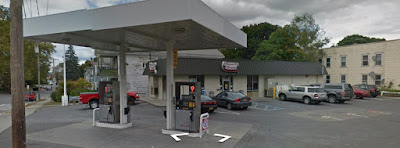Nick Zachos, youth director, who was present at the meeting, took issue with Delaney's negative assessment of the lake. He maintained that Oakdale Lake, a spring-fed lake, is remarkably clean. In fact, it is one of the cleanest lakes in Columbia County. "Right now," Zachos explained, "there is very little algae in the lake. There is vegetation that looks like algae, but it's not. It feeds the fish in the lake."
Recently, the lake was tested by the New York State Department of Health (DOH), and this morning Zachos shared the results with Gossips. Ecoli is 9 parts per 100 milliliters; the acceptable level for New York State is anything less than 235 parts per 100 milliliters. Coliform was so low it did not even register on the test; the acceptable level is less than 1,000 parts per 100 milliliters.
Zachos summarized:
According to the DOH these are especially low numbers, but in line with their view of Oakdale as one of the cleanest lakes in Columbia County. Oakdale is unique in being an urban lake with a very small watershed which is fed by natural springs, one in the pond and another that feeds in from the east (think Spring Street, which directly abuts the City's property). These factors combine to give us a remarkably clean lake for swimming, fishing, and boating.
We were obviously very excited to get these numbers from the state, because we were eager to see how our new nontoxic treatment regime was working. The new treatment is an enzyme-based liquid that starves out the algae and bacteria by consuming nitrogen from the pond.
We are trying to get the word out to the community about just how clean Oakdale is and to remind people that this amazing municipal resource is open to the public.
The park at Oakdale Lake is open to the public, with lifeguards on duty, from noon to 6 p.m. every day until the end of August. So make haste. You have just one month left this summer to enjoy this natural gem in our community.
COPYRIGHT 2017 CAROLE OSTERINK










































